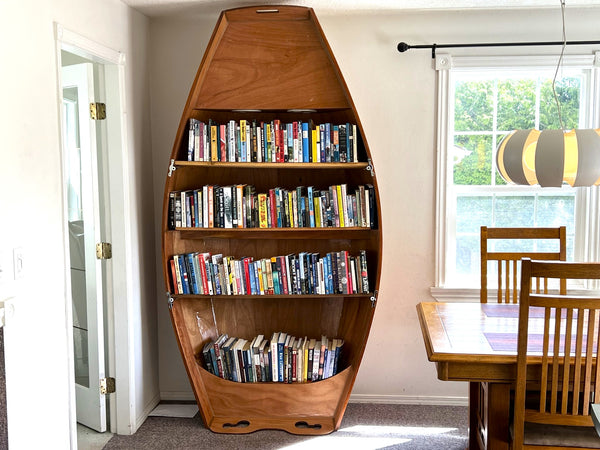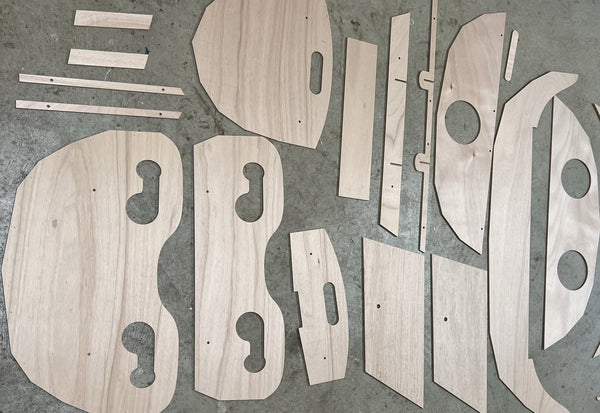Strategies for Race to Alaska
 It’s less than three months until the start of Race to Alaska. Over the next few weeks, I’ll be ramping up the training, and fine tuning the selection of gear and food I’ll be bringing on the voyage. Gear packing for a race is a delicate balance – it’s essential to have equipment to deal with all emergency situations and potential equipment failures, while trying to keep weight as low as possible.
It’s less than three months until the start of Race to Alaska. Over the next few weeks, I’ll be ramping up the training, and fine tuning the selection of gear and food I’ll be bringing on the voyage. Gear packing for a race is a delicate balance – it’s essential to have equipment to deal with all emergency situations and potential equipment failures, while trying to keep weight as low as possible.
The roster for the race isn’t yet complete, but there is already a diverse array of boats – from Bad Kitty, a renowned 35’ open catamaran, to Roger Mann’s (the fastest single-hander last year) entry, a Klepper folding kayak. If there’s any wind, the leaders in the race will most likely be the purpose-built racing sailing vessels, but there are going to be many exciting races within the race.
Our primary goal is to simply finish the race. Voyaging 1200 km unsupported along the full western coast of Canada is a feat in itself. As last year’s race made clear, completion is far from guaranteed. Beyond that, we’re excited to compete against the other single handers, and boats under 20’. Small Craft Advisor is offering $1000 for the first boat under 20’. While Race to Alaska has no official classes or categories, SCA’s prize is the closest thing to creating two distinct categories: boats over 20’ and boats under 20’. We are under no delusions that the RowCruiser, a recreational stitch-and-glue camper rowboat with an add-on sailing rig and a sole occupant, will be outperforming the larger racing vessels, but we are excited to see just how fast the RowCruiser can cover the 1200 km distance.
As I plan for the race, much of my fodder for imagination comes from my 2012 15.5-day circumnavigation of Vancouver Island in an Expedition rowboat breaking the existing human powered speed record. Half of my journey around Vancouver Island followed the first half of the Race to Alaska, and I did it at the exact same time of year (the second half of June).
Unlike last year’s R2AK race conditions, my circumnavigation of Vancouver Island had much more typical weather conditions. Overall, I encountered a significant amount of calms, and a mix of moderate winds from both the south and the north. Specifically, on the R2AK relevant section – from Victoria to Port Hardy - I encountered glassy calm for two and a half days (swelteringly hot) from Victoria to Comox. Through the Johnston Strait, I encountered two days of northwesterly winds peaking at about 20 knots, and one day with calm and half a day with stiff southeasterly winds.
As a result of my Vancouver Island experience, I’ve decided to modify my food provisions. After the Van Isle voyage I developed two cavities - after more than two decades of perfect dental health. The cause was fairly obvious – every hour I would eat sugary sticky snacks. Because of the heavy exercise, my mouth was dry, and there was insufficient saliva to wash my teeth clean. This time, while rowing, I’ll be fueling myself with liquid snacks which will be easier to consume and be much easier on the teeth.
Resting will be very different from my Vancouver Island circumnavigation experience. On that voyage I would pull my boat up on the beach at the end of each day and camp. In the RowCruiser, however, I will be anchoring for most rest breaks. This saves significant effort, and the cabin will provide comfortable accommodation. The downside to anchoring is the added weight of the anchor and soggy rode. I have pondered the idea of using a sack instead of an anchor, and simply filling it with rocks from the shore each night, but I have decided the extra effort of rock gathering isn’t worth it. Rest is precious!
The other big difference from my Van Isle experience is the ability to sail as well as row. If conditions are typical, I estimate I will be sailing about two thirds of the time. It is imperative that the sailing periods be as restful as possible, which involves staying warm and comfortable. The addition of the hiking board I have recently created achieves two purposes. From a performance perspective, it allows me to move my weight outboard thereby reducing pressure on the lee ama, and from a rest/recovery perspective, it is a very comfortable position, allowing me to stretch out fully while maintaining good forward visibility. Another small change I’ve made is the addition of an Anderson Self Bailer. Initially, I decided not to install a self-bailer as they create additional drag and often leak when the boat is traveling slowly. Instead, I would simply bail the small cockpit when conditions were rougher. After repeated testing, I finally decided that things would simply be more restful with the addition of the bailer. My goal, when winds are between 3-15 knots, is to feel like I’m on deck chair on a beach in Hawaii – eyes half open while lapping up the miles and eating beef stew.
Leave a comment
Comments will be approved before showing up.
Also in News

Human Powered Achievements through the Northwest Passage
At Angus Rowboats, our passion for adventure naturally draws us to the mystique of the Northwest Passage – one of the world's most captivating and perilous waterways. Historically, this elusive passage promised a shorter shipping route, spurring early navigators to fervently chart and struggle through its icy intricacies.
The summer of 2023 saw three audacious teams, including one using our very own RowCruiser boats, aiming to be the first to traverse NW Passage solely by human power within a single season. As the season concludes, we've chronicled these attempts, and catalogued past human-powered endeavors to navigate the Northwest Passage.

Creating a Bookcase from a Boat


Colin Angus
Author